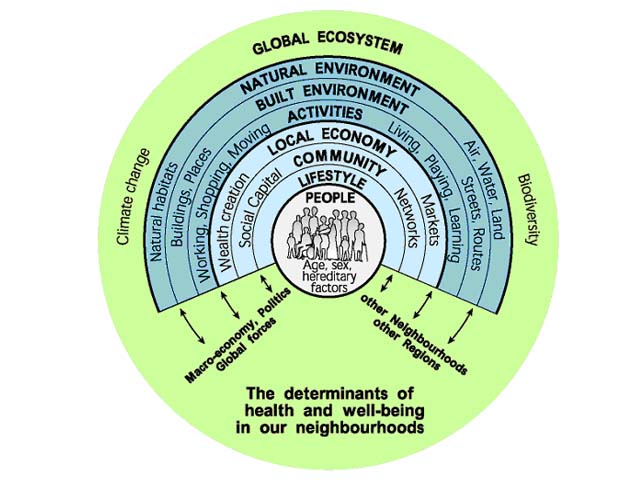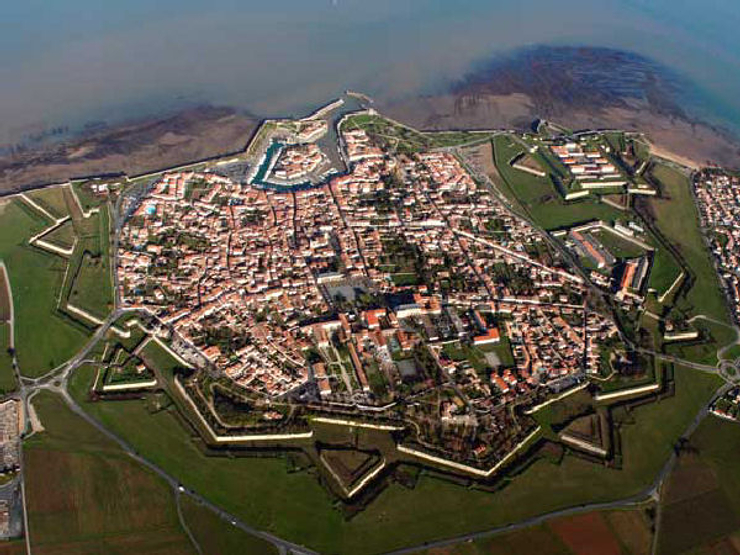What is the Built environment?
The man made environment that enables humans to live, work and recreate on a day to day basis. The built environment includes buildings, parks, infrastructure such as roads, water system, sewerage, electricity, gas resources, forming neighbourhoods and cities.
Aspects of the built environment include
- Land use
- Transport systems
- Design
The transport systems includes streets and highways, public transport system and infrastructure for walking and cycling to transport and shops.
Units of the built environment include:
- Buildings (this is the smallest unit of the built environment)
- neighbourhood
- Region
Design
The design of the built environment is very important, to help people take care of themselves. For instance. Driver revivers stops and signs to remind long distance drivers about taking rest to prevent driver fatigue. Buildings are put in place – such as toilets and recreation parks along the highways to enable drivers to take a break from driving.
The design of the environment can have a significant impact as to how the population use the environment and if cleverly planned it can encourage people to be more active. For instance to take the stairs instead of the escalator, (see this You tube clip) it can help people get active.
Piano Stairs
Complete Neighbourhoods are designed by Town planners:
Land use includes a mixture of residential, commercial, industrial and agricultural areas. These areas are zoned for the exact land use. by National, State and regional planning policies and legislation.
Schools, transport, leisure and food purchasing and food growing options is usually located in close proximity to the density of housing estates.
A Regional environments is a large unit – The sunshine coast is a Regional area.
Naarden – Netherlands
Historically:
During the Agricultural era: thousands of years ago people came together to form cities. The benefits where for company, commerce and mutual defense – (safety in numbers)
Cities where near water’s edge for transport and trade
High walls were built around the perimeter to defend the city. Everything in the city was in walking distance.
Public Health in the built environment:
Historically:
A city needs to be planned around public health and safety and be focused on prevention of infectious diseases.
Historically sanitation – sewerage was thrown out into the streets from the houses. Which also contained animal dropping.
In 1185 Paris was the first city to seal streets with gutters for proper and safe removal of human waste.
Infectious disease outbreaks included the Great Plague of London in 1665.
During the Industrial revolution:
- There was a massive influx of people settling causing congestion in one area.
- There was a clear distinction between City & Country.
- Land was used for mixed use.
- Distances within the city where short
- Class was divided by the more respectable & wealthy citizens would live in the central part of town. (this still happens today. Real estate is much higher in the capital cities)
Effective on the environmental health of the cities during the Industrial Revolution:
- Garbage includes dead animals
- Noxious trades
- Sewage, clean water, industrial pollution
- Inadequate housing
- Infection.
As the cities grew – there was urban sprawl and transport systems where needed to get around the expanding townships.
How Urbanisation has effected us:
- Reduced land available for agriculture
- Urban sprawl associated to poor health outcomes.
- Housing affordability
- Increased reliance on private vehicles
- Environmental degragation
- Increase waste per capita
- Decreased neighbourhood cohesion
Today – public health in the built environment:
Focuses on getting people active to promote a healthy lifestyles. The major health problems of today are generally preventable (within the primary stage).
We suffer today from chronic diseases, Heart disease, Stroke, Diabetes and cancer, that was not common with our ancestors as they where much more active.
Today the government are trying to build healthier Built environments
- Health promoters are working with Town planners – ie
- more walking and bike tracks
- community gardens
- Local shopping centres
 the health map barton and grant
the health map barton and grant
- Qld Health 2012 – Advancing good health
- Cook for life program
- Aims to build environments to help reduce obesity and chronic disease.
- Improve food supply and reduce exposure to highly processed energy dense food choices.
- Improve social connection – get fit programs
- Ensure Environmental sustainability
- Recognise limitations of educating people to improve their diets, physical activity and wellbeing in an environment that often discourages it.
Australian Obesity statistics
• Overweight and obesity rates continue to rise
• Australia currently has one of the highest rates of obesity in the world. Qld is one of the fatest states in Australia
• In 2007–08, 1 in 4 adults and 1 in 12 children were obese
• Being overweight or obese increases the risk of coronary heart disease, Type 2 diabetes, stroke, osteoarthritis, sleep apnoea and some cancers).
Source: Australian Institute of Health and Welfare 2012. Australia’s food & nutrition 2012. Cat. no. PHE 163. Canberra: AIHW
